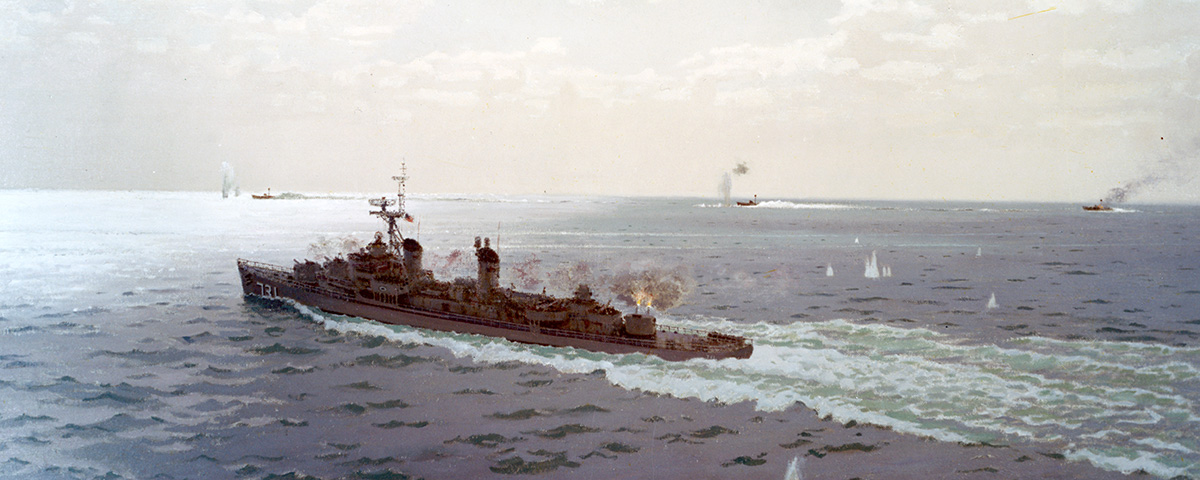This article by Capt. Carl Otis Schuster, U.S. Navy (ret.) originally appeared in the June 2008 issue of Vietnam magazine. A National Security Agency report released in 2007 reveals unequivocally that the alleged Aug. 4, 1964, attack by North Vietnam on U.S. destroyers never actually happened.
In the first few days of August 1964, a series of events off the coast of North Vietnam and decisions made in Washington, D.C., set the United States on a course that would largely define the next decade and weigh heavily on American foreign policy to this day. What did and didn’t happen in the Gulf of Tonkin on August 2 and 4 has long been in dispute, but the decisions that the Johnson Administration and Congress made based on an interpretation of those events were undeniably monumental.
While many facts and details have emerged in the past 44 years to persuade most observers that some of the reported events in the Gulf never actually happened, key portions of the critical intelligence information remained classified until recently.
In late 2007, that information was finally made public when an official National Security Agency (NSA) history of signals intelligence (SIGINT) in Vietnam, written in 2002, was released in response to a Freedom of Information Act request. With that report, after nearly four decades, the NSA officially reversed its verdict on the events of August 4, 1964, that had led that night to President Lyndon Johnson’s televised message to the nation: “The initial attack on the destroyer Maddox, on August 2, was repeated today by a number of hostile vessels attacking two U.S. destroyers with torpedoes…. Air action is now in execution against gunboats and certain supporting facilities in North Vietnam which have been used in these hostile operations.”
The next day, the president addressed Congress, seeking the power to “to take all necessary measures in support of freedom and in defense of peace in Southeast Asia.”
A joint resolution of Congress dated August 7, 1964, gave the president authority to increase U.S. involvement in the war between North and South Vietnam and served as the legal basis for escalations in the Johnson and Nixon administrations that likely dwarfed what most Americans could have imagined in August 1964.
Speculation about administration motives surrounding the Tonkin Gulf incident itself and the subsequent withholding of key information will probably never cease, but the factual intelligence record that drove those decisions is now clear. The string of intelligence mistakes, mistranslations, misinterpretations and faulty decision making that occurred in the Tonkin Gulf in 1964 reveals how easily analysts and officials can jump to the wrong conclusions and lead a nation into war.
The basic story line of the Gulf of Tonkin incident is as follows: At approximately 1430 hours Vietnam time on August 2, 1964, USS Maddox (DD-731) detected three North Vietnamese torpedo boats approaching at high speed. Along with other American warships, Maddox was steaming in international waters some 28 nautical miles off North Vietnam’s coast, gathering information on that country’s coastal radars.
As the torpedo boats continued their high-speed approach, Maddox was ordered to fire warning shots if they closed inside 10,000 yards. When the boats reached that point, Maddox fired three warning shots, but the torpedo boats continued inbound at high speed.
In the subsequent exchange of fire, neither American nor North Vietnamese ships inflicted significant damage. However, planes from the aircraft carrier Ticonderoga (CVA-14) crippled one of the boats and damaged the other two. Two days later, August 4, Maddox returned to the area, supported by the destroyer Turner Joy (DD-951). This time the U.S. ships detected electronic signals and acoustic indications of a likely second North Vietnamese naval attack, and they requested U.S. air support.
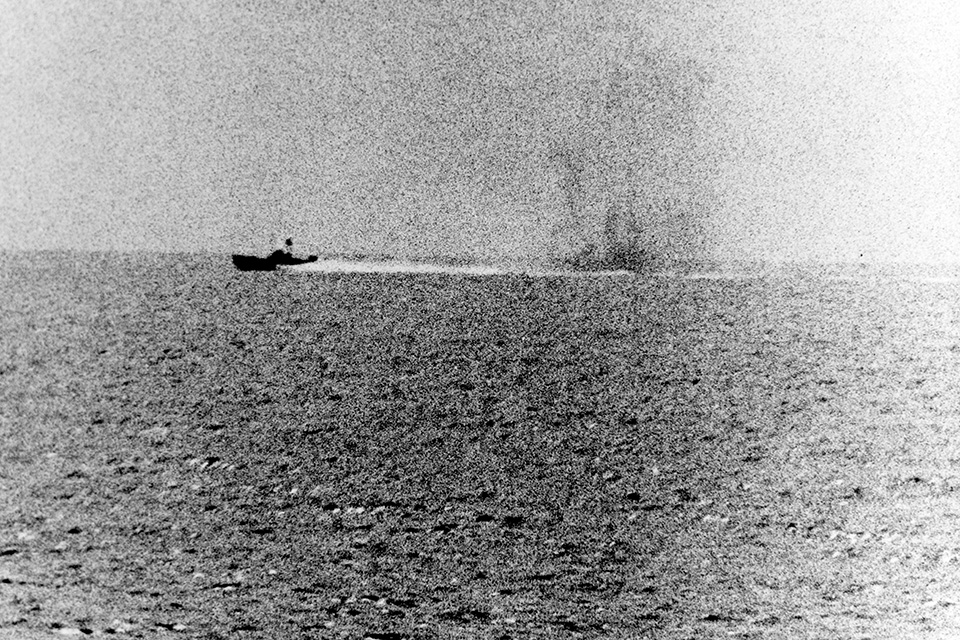
The 522-page NSA official history Spartans in Darkness: American SIGINT and the Indochina War, 1945-1975, triggered a new round of media reporting and renewed debate about what really happened in the Gulf of Tonkin. The report covers all aspects of the efforts of the various American SIGINT agencies from the early post–World War II years through the evacuation of Saigon. It reveals what commanders actually knew, what SIGINT analysts believed and the challenges the SIGINT community and its personnel faced in trying to understand and anticipate the aggressive actions of an imaginative, deeply committed and elusive enemy.
The report also identifies what SIGINT could—and could not—tell commanders about their enemies and their unreliable friends in the war. The report’s conclusions about the Gulf of Tonkin Incident are particularly relevant as they offer useful insights into the problems that SIGINT faces today in combating unconventional opponents and the potential consequences of relying too heavily on a single source of intelligence.
Media reporting on the NSA report’s assessments sparked a brief rehash of the old arguments about the Gulf of Tonkin. The most popular of these is that the incident was either a fabrication or deliberate American provocation. Such arguments are rooted in the information and documents released by Daniel Ellsberg and others, and were reinforced over the decades by “anniversary interviews” with some of the participants, including ships’ crewmen and officers. Most uncertainty has long centered on the alleged second attack of August 4.
Unfortunately, much of the media reporting combined or confused the events of August 2 and 4 into a single incident. Senate investigations in 1968 and 1975 did little to clarify the events or the evidence, lending further credence to the various conspiracy theories.
Although North Vietnamese General Vo Nguyen Giap admitted in a 1984 discussion with Robert S. McNamara that the first attack was deliberate, he denied that a second attack had ever taken place. McNamara insisted that the evidence clearly indicated there was an attack on August 4, and he continued to maintain so in his book In Retrospect: The Tragedy and Lessons From Vietnam.
In 1996 Edward Moise’s book Tonkin Gulf and the Escalation of the Vietnam War presented the first publicly released concrete evidence that the SIGINT reporting confirmed the August 2 attack, but not the alleged second attack of August 4. Moise’s book, however, was based on only the few SIGINT reports he was able to obtain through the Freedom of Information Act.
The NSA report is revealing. By including the orders and operational guidance provided to the units involved, the study develops the previously missing context of the intelligence and after–action reports from the Gulf of Tonkin Incident.
The study debunks two strongly held but opposing beliefs about what happened on both days—on the one hand that neither of the reported attacks ever took place at all, and on the other that there was in fact a second deliberate North Vietnamese attack on August 4. Although the total intelligence picture of North Vietnam’s actions and communications indicates that the North Vietnamese did in fact order the first attack, it remains unclear whether Maddox was the originally intended target.
The NSA report exposes translation and analytical errors made by the American SIGINT analysts—errors that convinced the naval task force and national authorities that the North had ordered a second attack on August 4, and thus led Maddox’s crew to interpret its radar contacts and other information as confirmation that the ship was again under attack. Subsequent SIGINT reporting and faulty analysis that day further reinforced earlier false impressions. The after-action reports from the participants in the Gulf arrived in Washington several hours after the report of the second incident. By then, early news accounts had already solidified some opinions, and the Johnson Administration had decided to launch retaliatory strikes.
The errors made in the initial analysis were due to a combination of inexperience, limited knowledge of North Vietnam’s operations and an operational imperative to ensure that the U.S. Navy ships would not be caught by surprise. Background intelligence on North Vietnam, its radar networks and command-and-control systems was limited. By late 1958 it was obvious that a major Communist buildup was underway in South Vietnam, but the American SIGINT community was ill-placed and ill-equipped to deal with it. The U.S. in-theater SIGINT assets were limited, as was the number of Vietnamese linguists.
The United States Military had three SIGINT stations in the Philippines, one for each of the services, but their combined coverage was less than half of all potential North Vietnamese communications. As Communist communications activity was rising rapidly, American senior leaders were increasing support to the South Vietnamese government. The intelligence community, including its SIGINT component, responded with a regional buildup to support the increase in U.S. operational forces.
One element of American assistance to South Vietnam included covert support for South Vietnamese commando raids against North Vietnam’s coastal transportation facilities and networks. Conducted under the nationally approved Operations Plan, OPLAN-34A, the program required the intelligence community to provide detailed intelligence about the commando targets, the North’s coastal defenses and related surveillance systems. Given the maritime nature of the commando raids, which were launched from Da Nang, the bulk of the intelligence collecting fell to the Navy. At the time, the Navy relied heavily on Naval Support Group Activity (NSGA), San Miguel, Philippines, for SIGINT support, augmented by seaborne SIGINT elements called Direct Support Units (DSUs).
The Navy’s seaborne SIGINT effort in support of OPLAN-34, called Desoto Missions, played a key role in the events that ultimately led to the Gulf of Tonkin incident. In 1964 the Navy was attempting to determine the extent of North Vietnam’s maritime infiltration into the South and to identify the North’s coastal defenses so that Military Assistance Command Vietnam (MACV) could better support South Vietnam’s commando operations against the North.
The secondary mission of the Gulf of Tonkin patrols was to assert American freedom of navigation in international waters. The U.S. ships were supposed to remain well outside North Vietnam’s claimed five nautical mile territorial limit. The maximum closure distance was originally established at 20 nautical miles, but the commander of the U.S. Seventh Fleet reduced it to 12 nautical miles. The commander also added the requirement of collecting photographic intelligence of ships and aircraft encountered, as well as weather and hydrographic information.
The first Desoto Mission was conducted by USS Craig (DD-885) in March 1964. The North Vietnamese did not react, probably because no South Vietnamese commando operations were underway at that time. In fact, an earlier Desoto patrol planned for February had been canceled because of concerns over potential interference with South Vietnamese commando missions scheduled for the same time. For some reason, however, the second Desoto Mission, to be conducted by Maddox, was not canceled, even though it was scheduled to start at the same time that a late July commando mission was being launched.
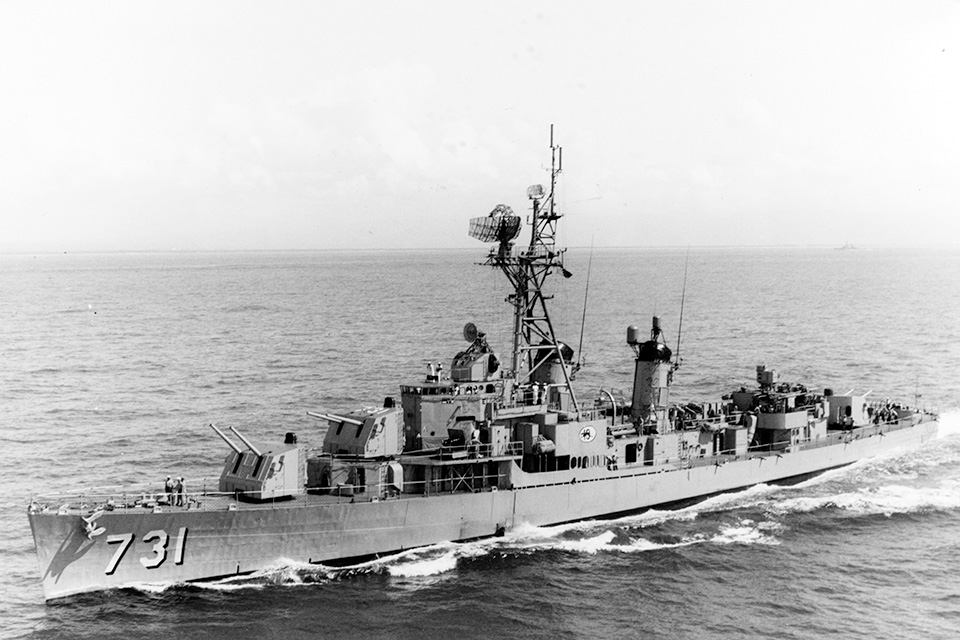
Consequently, while Maddox was in the patrol area, a South Vietnamese commando raid was underway southwest of its position. Operations Security (OPSEC) concerns and related communications restrictions prevented Maddox and its operational commanders up to the Seventh Fleet from knowing of the commando raid. More important, they did not know the North Vietnamese had begun to react more aggressively to the commando raids. Thus, the South Vietnamese raid on Hon Me Island, a major North Vietnamese infiltration staging point, became the tripwire that set off the August 2 confrontation in the Gulf of Tonkin.
Midday on August 1, NSGA San Miguel, the U.S. Marine Corps SIGINT detachment co-located with the U.S. Army at Phu Bai, and Maddox’s own DSU all detected the communications directing the North Vietnamese torpedo boats to depart from Haiphong on August 2. Both the Phu Bai station and Maddox’s DSU knew the boats had orders to attack an “enemy ship.”
Not knowing about the South Vietnamese commando raid, all assumed that Maddox was the target. Based on the intercepts, Captain John J. Herrick, the on-scene mission commander aboard nearby Turner Joy, decided to terminate Maddox’s Desoto patrol late on August 1, because he believed he had “indications the ship was about to be attacked.”
Herrick’s concerns grew as the SIGINT intercepts indicated that the North Vietnamese were concentrating torpedo boats off Hon Me Island, 25 nautical miles to his southwest. NSA analysts from shore-based stations shared Herrick’s belief and transmitted an immediate warning to all major Pacific Theater commands—except to Herrick and Maddox.
Shortly thereafter, the Phu Bai station intercepted the signal indicating the North Vietnamese intended to conduct a torpedo attack against “the enemy.” Phu Bai issued a “Critic Report”—short for critical message, meaning one that had priority over all other traffic in the communications system to ensure immediate delivery—to all commands, including Maddox.
The subsequent North Vietnamese reporting on the “enemy” matched the location, course and speed of Maddox. The SIGINT intercepts also detected that the North Vietnamese coastal radar stations were tracking Maddox and reporting its movements to the outbound torpedo boats. Then North Vietnam’s naval authorities either became confused or were seized by indecision. They issued a recall order from Haiphong to the port commander and communications relay boat two hours after the torpedo boat squadron command issued its attack order.
Both orders were repeated, but only the latter was relayed to the torpedo boats before the attack was launched. Haiphong again repeated the recall order after the attack. It still is not clear whether the order was intended to halt the attack or to delay it until after nightfall, when there was a much greater chance for success. In any event, the attack took place in broad daylight under conditions of clear visibility.
Maddox detected the torpedo boats on radar at a range of almost 20,000 yards and turned away at its top speed of 32 knots. The boats followed at their maximum speed of 44 knots, continuing the chase for more than 20 minutes. The captain of Maddox, Commander Herbert L. Ogier Jr., ordered his ship to battle stations shortly after 1500 hours. Efforts to communicate with the torpedo boats failed, probably because of language and communications equipment incompatibility.
At 1505, when the torpedo boats had closed within 10,000 yards, in accordance with Captain Herrick’s orders and as allowed under international law at that time, Maddox fired three warning shots. The ship’s gunners used the standard 5 mil offset to avoid hitting the boats. Nonetheless, the North Vietnamese boats continued to close in at the rate of 400 yards per minute. Ogier then opened fire at 1508 hours, when the boats were only six minutes from torpedo range. He also requested air support.
The three torpedo boats continued through the American barrage and launched their torpedoes at 1516. All missed, probably because the North Vietnamese had fired too soon. One 12.7mm machine bullet hit Maddox before the boats broke off and started to withdraw. Aircraft from Ticonderoga arrived on-scene at 1528 hours and fired on the boats. Both sides claimed successes in the exchange that they did not actually achieve.
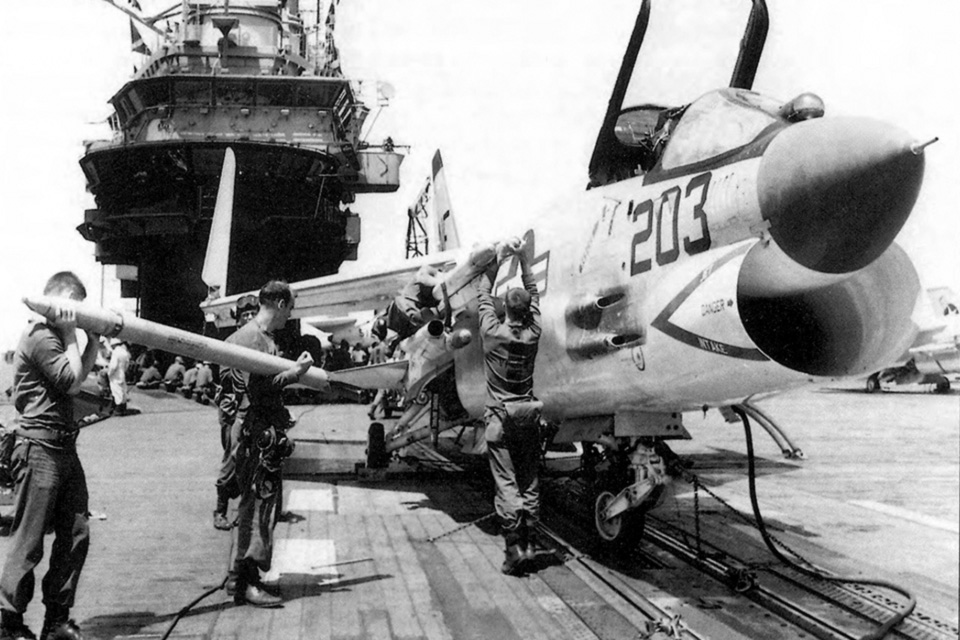
The Americans claimed they sank two torpedo boats and damaged a third, while the torpedo boats claimed to have shot down two American aircraft. In truth, two of the torpedo boats were damaged, of which one could not make it back to port, while a single American aircraft sustained some wing damage.
Each side’s initial after-action review was positive. U.S. SIGINT support had provided ample warning of North Vietnam’s intentions and actions, enabling the American ship to defend itself successfully. The North Vietnamese believed that, although they had lost one boat, they had deterred an attack on their coast. The Johnson Administration initially limited its response to a terse diplomatic note to Hanoi, the first-ever U.S. diplomatic note to that government. Simultaneously, U.S. SIGINT was placed on increased alert to monitor indications of future North Vietnamese threats to the Desoto Missions, and additional air and naval forces were deployed to the Western Pacific.
With a presidential election just three months away and Johnson positioning himself as the “peace candidate,” the administration spoke of American resolve not to react to provocation and to avoid escalation.
Both sides, however, spent August 3 reviewing their contingency plans and analyzing lessons learned from the incident. The U.S. Joint Chiefs of Staff (JCS) decided to resume Maddox’s Desoto patrol, but at a greater distance from the coast, accompanied by Turner Joy and supported by aircraft from Ticonderoga.
North Vietnam’s immediate concern was to determine the exact position and status of its torpedo boats and other forces. The North also protested the South Vietnamese commando raid on Hon Me Island and claimed that the Desoto Mission ships had been involved in that raid. Although Washington officials did not believe Hanoi would attack the Desoto ships again, tensions ran high on both sides, and this affected their respective analyses of the events to come.
The series of mistakes that led to the August 4 misreporting began on August 3 when the Phu Bai station interpreted Haiphong’s efforts to determine the status of its forces as an order to assemble for further offensive operations.
That initial error shaped all the subsequent assessments about North Vietnamese intentions, as U.S. SIGINT monitored and reported the North’s tracking of the two American destroyers. The North Vietnamese coastal radars also tracked and reported the positions of U.S. aircraft operating east of the ships, probably the combat air patrol the Seventh Fleet had ordered in support. A North Vietnamese patrol boat also trailed the American ships, reporting on their movements to Haiphong. American SIGINT analysts assessed the North Vietnamese reporting as probable preparations for further military operations against the Desoto patrol.
Meanwhile, by late August 3, the North Vietnamese had learned the condition of their torpedo boats and ordered a salvage tug to recover the damaged craft. The tug departed Haiphong at approximately 0100 hours on August 4, while the undamaged torpedo boat, T-146, was ordered to stay with the crippled boats and maintain an alert “for enemy forces.” At about 0600, the two U.S. destroyers resumed the Desoto patrol.
Neither ship’s crew knew about the North Vietnamese salvage operation. The departure of the North Vietnamese salvage tug en route to the damaged craft was reported to the American ships as a submarine chaser, not a serious threat but certainly more so than an unarmed seagoing tug.
Captain Herrick had been ordered to be clear of the patrol area by nightfall, so he turned due east at approximately 1600. Two hours later the Phu Bai SIGINT station transmitted a critic report warning of “possible [North Vietnamese] naval operations planned against the Desoto patrol.” Twenty-five minutes later, Phu Bai sent a second critic report that said, “…imminent plans of [North Vietnamese] naval action possibly against Desoto Mission.”
By then, the two American ships were approximately 80 nautical miles from the nearest North Vietnamese coastline and steaming southeast at 20 knots. The first critic report from Phu Bai reached Washington at about 0740 hours, Eastern Daylight Time (EDT). Defense Secretary McNamara called the president about the second Phu Bai critic report at approximately 0940 that morning. Both men believed an attack on the American ships was imminent. The stage was set.
At 2000 hours local time, Maddox reported it had two surface and three aerial contacts on radar. The contacts were to the northeast of the ship, putting them about 100 nautical miles from North Vietnam but very close to China’s Hainan Island. Ticonderoga ordered four A-1H Skyraiders into the air to support the ships. They arrived on station overhead by 2100 hours. The original radar contacts dropped off the scope at 2134, but the crews of Maddox and Turner Joy believed they detected two high-speed contacts closing on their position at 44 knots.
When the contacts appeared to turn away at 6,000 yards, Maddox’s crew interpreted the move as a maneuver to mark a torpedo launch. The ship’s sonar operator reported a noise spike—not a torpedo—which the Combat Information Center (CIC) team mistook for report of an incoming torpedo.
Both U.S. ships opened fire on the radar contacts, but reported problems maintaining a lock on the tracking and fire control solution. The first reports of the encounter from the destroyers reached the White House at 1000 EDT. Two hours later, Captain Herrick reported the sinking of two enemy patrol boats.
With this information, back in Washington President Johnson and his advisers considered their options. By 1400 hours EDT, the president had approved retaliatory strikes against North Vietnamese naval bases for the next morning, August 5, at 0600 local time, which was 1900 EDT on August 4 in Washington. In the meantime, aboard Turner Joy, Captain Herrick ordered an immediate review of the night’s actions.
His assessment of the evidence now raised doubts in his mind about what really had happened. He reported those doubts in his after action report transmitted shortly after midnight his time on August 5, which was 1300 hours August 4 in Washington.
Herrick requested aerial reconnaissance for the next morning to search for the wreckage of the torpedo boats he thought he had sunk. Both of these messages reached Washington shortly after 1400 hours EDT. Neither Herrick’s doubts nor his reconnaissance request was well received, however. The Pentagon had already released details of the “attack,” and administration officials had already promised strong action. Then, everyone’s doubts were swept away when a SIGINT intercept from one of the North Vietnamese torpedo boats reported the claim that it had shot down two American planes in the battle area.
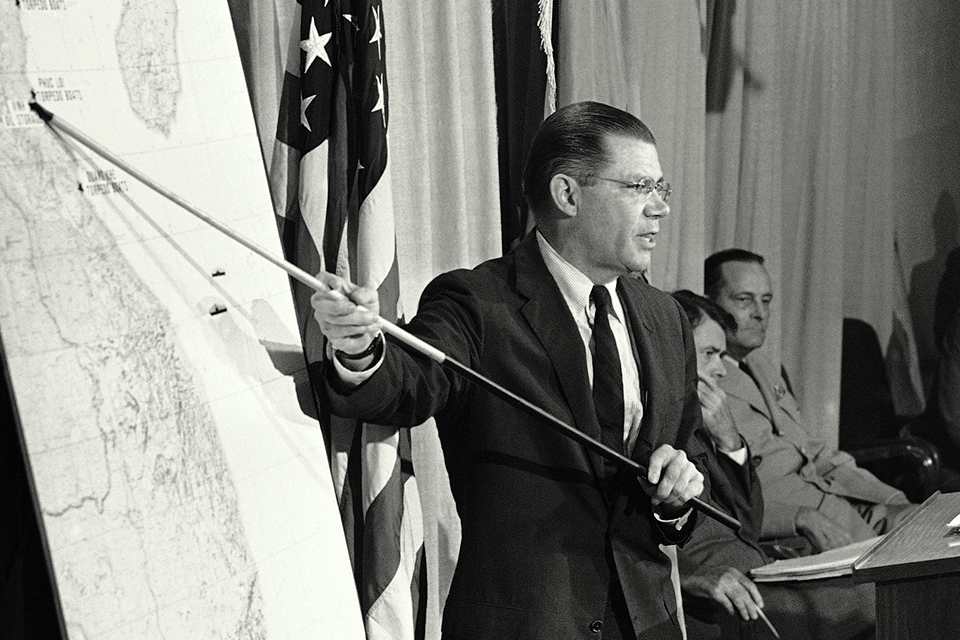
McNamara and the JCS believed that this intercept decisively provided the “smoking gun” of the second attack, and so the president reported to the American people and Congress.
A subsequent review of the SIGINT reports revealed that this later intercept—McNamara’s “smoking gun”—was in fact a follow-on, more in-depth report of the August 2 action. Moreover, the subsequent review of the evidence exposed the translation and analysis errors that resulted in the reporting of the salvage operation as preparations for a second attack. In fact, the North Vietnamese were trying to avoid contact with U.S. forces on August 4, and they saw the departure of the Desoto patrol ships as a sign that they could proceed to recover their torpedo boats and tow them back to base.
They never intended to attack U.S. forces, and were not even within 100 nautical miles of the U.S. destroyers’ position at the time of the purported “second engagement.”
NSA officials handed the key August SIGINT reports over to the JCS investigating team that examined the incident in September 1964. Those same reports were shown to the select congressional and senate committees that also investigated the incident. The entirety of the original intercepts, however, were not examined and reanalyzed until after the war.
The 122 additional relevant SIGINT products confirmed that the Phu Bai station had misinterpreted or mistranslated many of the early August 3 SIGINT intercepts. With that false foundation in their minds, the on-scene naval analysts saw the evidence around them as confirmation of the attack they had been warned about.
Those early mistakes led U.S. destroyers to open fire on spurious radar contacts, misinterpret their own propeller noises as incoming torpedoes, and ultimately report an attack that never occurred.
Despite the on-scene commanders’ efforts to correct their errors in the initial after-action reports, administration officials focused instead on the first SIGINT reports to the exclusion of all other evidence. Based on this, they launched the political process that led to the war’s escalation.
The Gulf of Tonkin Incident and many more recent experiences only reinforce the need for intelligence analysts and decision makers to avoid relying exclusively on any single intelligence source—even SIGINT—particularly if other intelligence sources are available and the resulting decisions might cost lives. Signals Intelligence is a valuable source but it is not perfect. It can be deceived and it is all too often incomplete. Like all intelligence, it must be analyzed and reported in context. People are human and make mistakes, particularly in the pressure of a crisis or physical threat to those they support. Perhaps that is the most enduring lesson from America’s use of SIGINT in the Vietnam War in general and the Gulf of Tonkin Incident in particular.
Carl Schuster is a retired U.S. Navy intelligence officer with 10 years of experience as a surface line officer. His first ship was USS Glennon (DD-840), a FRAM I destroyer, the same class as Maddox. For additional reading, see the recently declassified NSA study by Robert J. Hanyok, Spartans in the Darkness: American SIGINT and the Indochina War, 1945-1975; and Tonkin Gulf and The Escalation of the Vietnam War, by Edward Moise.
To subscribe to Vietnam Magazine, click here!

